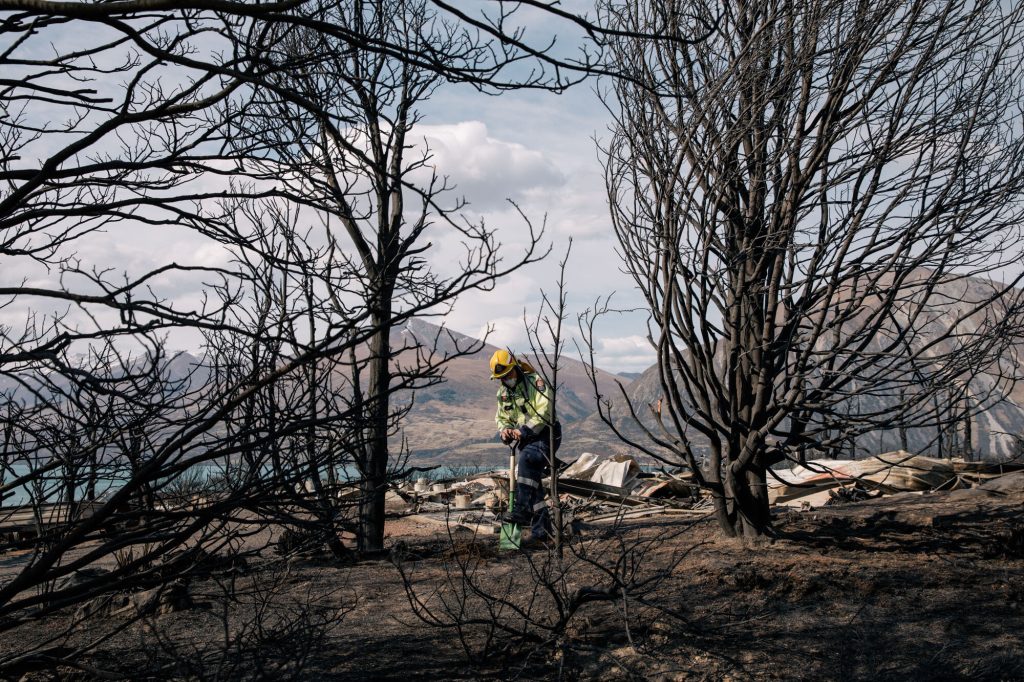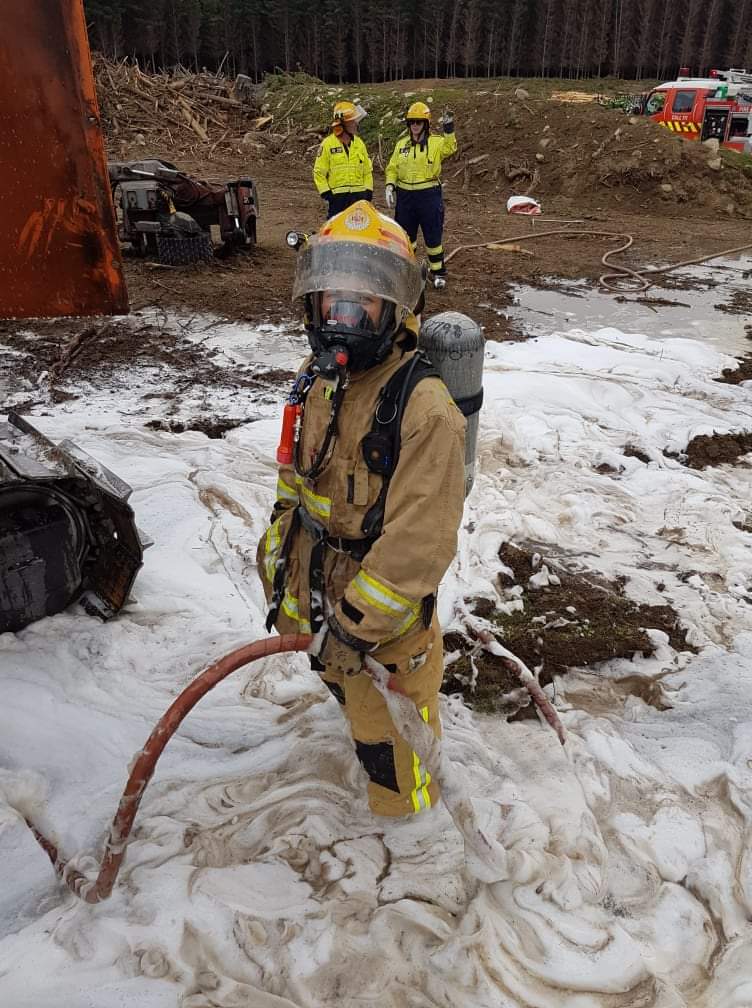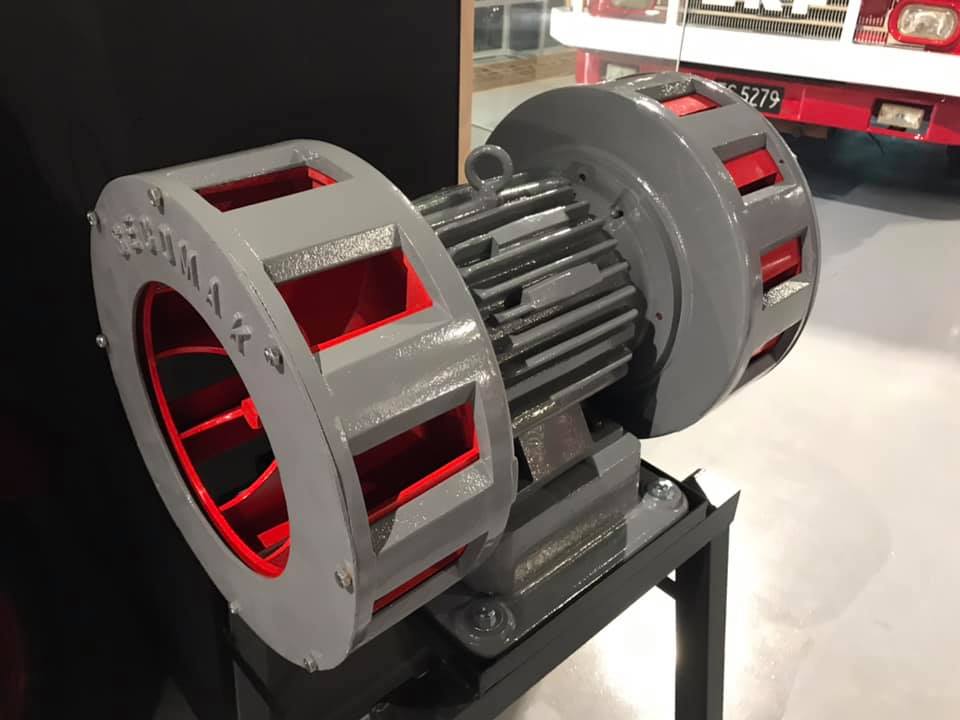In praise of the rural fire siren
THIS STORY STARTED WITH ONE OF THOSE FACEBOOK COMMUNITY GROUPS. IN BETWEEN THE UN- MICROCHIPPED DOGS, UPCOMING PUB QUIZZES, CARDBOARD BOXES TO GIVE AWAY AND ISOS CASUAL CLEANERS FOR AIRBNBS, A DISCUSSION HAD IGNITED AROUND THE VOLUME OF THE TOWN FIRE SIREN, AND COMPLAINTS ABOUT THEREOF. THE HASHTAG “NIMBY” FEATURED A LOT.

Anyone who lives in small town Aotearoa knows the sound. Sirens are used in nearly 370 communities throughout the motu to alert the fire brigade when there’s an emergency. Locals are used to them, but they do frighten tourists, as documented by this travel blogger on the Career Gappers website, who describes being woken at 2am by a siren while camping near Fox Glacier. “Think of those chilling, deep, slowly ascending and descending tones of the air raid sirens used in World War II – that exact sound. ‘What the fuck is that?’ we whisper- shrieked simultaneously, and then froze to the spot as the siren wailed on.”
The Facebook group in question was in the Wānaka area, but other regions have been subject to similar whinges, and debates, including Kerikeri, Te Puke, Putāruru, Waimate, Timaru and Carterton. In most cases, the critics got a solid social media dressing down, with “self-centred jerks” and “complete miser” (Wānaka), as well as “if you don’t like it LEAVE” (Carterton), a good representation of the tone of things.
It does beg the question, though. In the era of digital communication, is it really necessary to re-enact that Jackass movie where the guy terrorises a bunch of golfers with an air horn every time there’s a fire? Can’t we just send a text? The answers to those questions are yes, and no, and there’s more to it than public safety.

LET’S GET THE MONEY THING OUT OF THE WAY
As a start, we can cut the foreigners some slack. One reason the Career Gapper might not be used to 2am public alarms is that, in a global context, this is not the norm. According to the United Fire Brigades’ Association, New Zealand has one of the highest numbers of unpaid firefighters per capita in the world; nationwide, approximately 85%, or 11,500, of the country’s firefighters are volunteers. In many rural areas, like Fox Glacier, all of the fire crews do what they do for free. In fact, from Christchurch north, the only paid firies on the South Island are in Nelson. If you’re in Wānaka, everyone in a fire truck is a volunteer until you get to Dunedin.
It’s because of this high degree of volunteerism that many towns still use what one critic called “World War II technology.” Unlike the mostly urban-based career firefighters, who stay at the station when they are rostered on, volunteers are summoned from wherever they happen to be at the time: home, work, the movies, swimming in the lake, hanging out with noisy kids, mowing the lawn. Most have pagers and/or an alert system on their phones, but their efficacy is limited (see “swimming in the lake”.) On top of this, rural mobile reception is crap. Sirens may be crude, but they get the message out, fast.
Speaking of money, it’s estimated volunteer firefighters work 1.9 million hours per year, delivering the equivalent of $659 million in free labour. To put that in context, the entire budget of Fire and Emergency New Zealand (FENZ), which oversees all of the country’s firefighting and emergency services, is about $600 million. The New Zealand Taxpayers’ Union should perch a fire siren on the top of their logo instead of that suspiciously-white kiwi bird.
A BRIEF HISTORY OF VOLUNTEER FIREFIGHTING
Luggate is a small village on the outskirts of Wānaka. Founded in 1952 by the local publican, Tommy Hopkins, its volunteer brigade was the first in the Upper Clutha. Prior to that, firefighting was a community effort, with everyone lending a hand, though the “all hands on deck” spirit persisted after the Luggate Volunteer Fire Brigade launched. Its single Gwynne trailer pump was towed behind Tommy’s 1500cc Singer Roadster automobile and was initially stored at the yard of a local business, Reid and Sons Transport.
In 1957, a resident farmer, Bill Taylor, donated a section of land for a “firehouse”, which consisted of a one-bay concrete block shed, complete with a siren housed inside an oil drum on the roof (it’s pictured in the header image above). Colin Johnson, who started with the brigade when he was 15 as a runner, remembers how the alarm was the only way to get the word out at first. “There were no radio telephones or things then, and no one had a telephone. The only phones we had in Luggate were at Reid’s and at the hotel.” Today, of the township’s 500 or so residents, about 20 serve on the brigade (that’s 4% of the population), and the siren is still a familiar sound to all who live there.

The tradition of unpaid firefighting in New Zealand goes back to the mid- 1800s. According to Nancy Swarbrick’s history of early fire services in the Te Ara encyclopaedia, the country’s first official volunteer brigade started in Auckland in 1854. In some places, though, everyone was expected to pitch in; an 1856 Wellington law required all citizens to have two buckets of water on hand at all times in case of a fire. Swarbrick also notes that public alerts systems were a thing from the start: “from the 1840s to the 1870s many towns had a centrally located fire bell that was rung by anyone who spotted flames. Sometimes church bells were used.”
Professional fire brigades began to appear in cities from the late 1860s onwards. (There were some paid units prior to this, but they were sponsored by insurance companies and would only put out blazes at properties that were insured. Speaking of money, again.) In rural communities like Luggate, firefighting was left to, and is still left to, volunteers.
Being a volunteer is a big commitment. New recruits attend a week-long course covering first aid, hose and ladder drills, how to use a ‘BA’ (breathing apparatus), as well as live fire training. As Bill Butzbach, Chief Executive of the United Fire Brigades’ Association, notes, “many people are unaware that volunteers receive the same high level of training of their almost 1,800 salaried colleagues.” Rod Anderson, the longest serving member of the Luggate Brigade (he’s been with the organisation for 50 years, and Chief Fire Officer for more than 25), remembers that, “when I first joined in 1972, they used to have one Sunday morning in every month, and that’s the only time we met [for training]. Now we go every Monday night … we’ve got to be trained to the same level as a professional firefighter.” The number of callouts has grown too. Luggate attends about 80 per year, Wānaka gets 200, while Levin, one of the busier brigades, gets called to 450 incidents annually.
IT’S NOT JUST ABOUT FIRES
Today, volunteer crews like Luggate’s fall under the umbrella of FENZ, which was created in 2017 to unify the country’s disparate urban and rural 40 firefighting organisations, and also to better reflect the range of work those organisations were doing. Because when the sirens ring, it’s not always Prometheus who has set them off.
Keith Teasdale is a Senior Firefighter with the Runanga Fire Brigade, a single appliance brigade located north of Greymouth. A born and bred “Runanga boy”, he joined 25 years ago after his older brother encouraged him to get involved. He loves the community aspect of the brigade and, as a certified driver, he gets to do what we all secretly long to when we see a fire truck: drive with the lights and sirens on. In case you were wondering, they are allowed to go up to 25 kph over the speed limit, though they do have to obey the road rules, and cannot exceed 105 kph. Still, wee-woo, wee-woo!
Keith says the biggest change in his time has been the nature of the callouts. “The events we deal with now are more varied,” he says. “It was car crashes and fires, but now it’s medical, then crashes and fires.”
Nationwide, almost two-thirds of fire crew deployments are not actually to fires, but to motor vehicle accidents or medical events, which can include everything from childbirths, to cardiac arrests, to sudden deaths, including suicides; firefighters see more of this in part because of a 2014 Memorandum of Understanding with the St John ambulance service, which formalised the fire services’ role in providing medical support (like helping with CPR) and non-medical assistance (such as lifting and extracting patients) to ambulance crews.
Especially in small communities, the first vehicle on the scene of a Motor Vehicle Accident (MVA) or a cardiac event is often a fire truck. The New Zealand Resuscitation Council estimates that 96% of sudden cardiac arrests last year were attended by fire crews. With these kinds of incidents, comes trauma. Keith does note that “one of things that has majorly improved is the counselling and the debriefs. Before, you just went away and sucked it up, and some members over the years have not had the right tools to deal with it.”
Volunteer firefighters are also often at the forefront after civil emergencies, including flooding like recent events on the West Coast and in Nelson, as well as earthquakes and large fire events. Keith was involved in fighting the 2017 Port Hills fire, which burned more than 1600 hectares and claimed the life of one firefighter; it was, he says, “some of the hardest work I’ve ever done”.
He also attended after the Christchurch earthquake. Several crews from the West Coast, including Runanga, Cobden, Westport and Reefton were called to the city to relieve the Canterbury-based brigades. “We rocked into Christchurch thinking we were going to sort it out, but then we got into the epicentre, and it was, ‘Oh shit’,” Keith remembers. His work there included helping at the CTV building site. For him, though, being based on the West Coast, with its winding roads and often perilous driving conditions, it’s the MVAs he is reminded of most often: “every time I go up the coast road, I know the spots.”

A SIREN IS GRATITUDE
In 2020, in the North Canterbury town of Oxford, FENZ decided to prioritise pagers and phones over the siren for night-time callouts. Residents weren’t having a bar of it. A petition was launched quicksmart to reinstate the siren as the primary alert system no matter what the time, and nearly half of the town’s population of 2200 signed it. It wasn’t just about risk. As one of the petition’s organisers, Cassandre Walker, said at the time, “we wanted to do it to support our brigade.’’ Hearing the late-night wail is a form of solidarity, of ensuring the work firefighters do does not go unnoticed. FENZ turned the siren back on.
Teresa Cotter, of the Lake Hāwea Volunteer Fire Brigade, agrees, adding that, for someone in trouble, the sound of the siren is a relief: “if your house is on fire, it’s nice to hear it, because you know help is on the way.”
She joined the brigade 13 years ago. Like Keith, Teresa had a family connection. Her grandfather Dick Cotter formed the Hāwea fire party in 1968, which was formalised in 1972 as the Lake Hāwea Volunteer Fire Brigade. Her dad was in the brigade for 22 years too, and when she was young, she remembers she was “so interested in dad’s stories, what he’d been to, what they’d done at practice.” She joined as soon as she turned 18, and she’s not the only Cotter on the job; her sister and brother-in-law are both part of the Hāwea crew, and while her grandfather is well retired (he’s 95), last year he was elected patron of the brigade.
Teresa has loved her time with the fire service, calling it rewarding, despite the tougher moments. “A call might take an hour, but it might take months to get over – that’s what people don’t realise,” she says.
Working rurally can make these moments even tougher, with responders dealing with people they know, or, worse, are close to. Incidents involving children, such as choking or febrile convulsions, can be especially challenging. But Teresa, who drives the school bus, reckons that when someone at a scene knows she’s a parent too, that knowledge can bring with it a touch of extra comfort in the face of trauma. It’s community at its best.
(Small towns can be tricky in other ways too. Teresa tells a story about the time she pulled a sickie to go horse riding with a mate. “My friend’s horse fell down a bank, and she ended up with the horse on top of her. I had to call the fire brigade.” Unfortunately, her boss was on the brigade. Busted.)
RURAL: A NOTE
When it comes to fire service jargon, “rural” doesn’t just mean “not in a city”. Luggate, for example, is classified as “urban”, because there are houses, and fires can be fought with engines and hoses. Rural crews deal with scrub, bush and forest fires, and do a lot of shovel work, using water minimally to dampen things down.
They even wear different outfits. The urban kit is reminiscent of your Richard Scarry What Do People Do All Day? “fireman”, while rural responders head out in high vis coveralls – all for better for jumping out of helicopters and trekking through the backcountry with a 20-kilogram Scotty bag (a portable water reservoir) on your back.
There’s a bit of good-natured rivalry between the two. Keith, who is trained in both, laughs that rural firies like to have a go at their urban counterparts for “just throwing water” at blazes. At the Port Hills fire, which was fought rural-style, “it was funny. The fellas I was with didn’t know I was more urban than rural, and they were just rubbishing urban.”
IN PRAISE OF THE FIRE SIREN
When the siren tolls, ask not who it tolls for, or why, just be thankful it’s not you. Or if it is you, be thankful help is on its way. What the fuck is that? It’s the sound of a small town, of good buggers lending others a hand, of community, of thanks. Or as a Timaruvian named Arthur Martin wrote in his poem ‘The siren calls’ in response to the usual complaints, as printed in the Timaru Herald: “The siren not just his call / but a reminder of what he is doing for us all.” Too right.
LAURA WILLIAMSON

